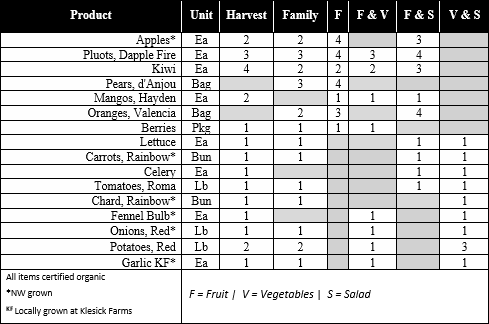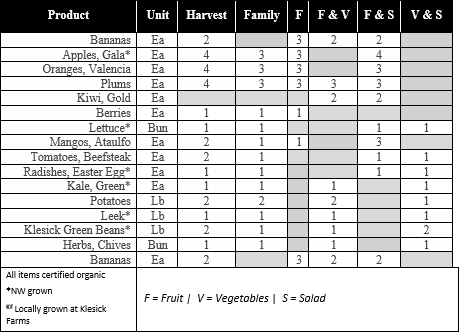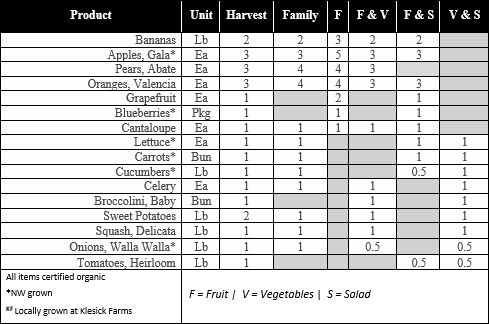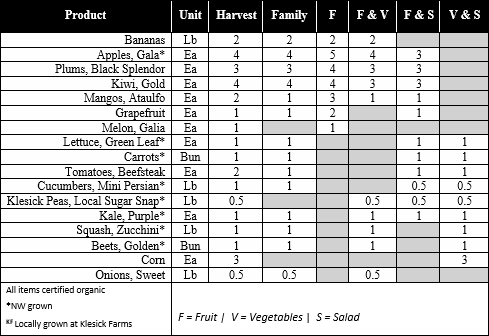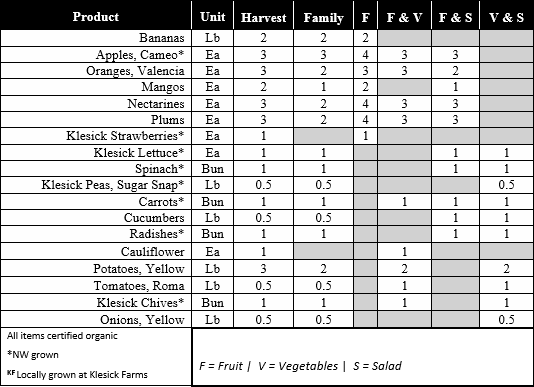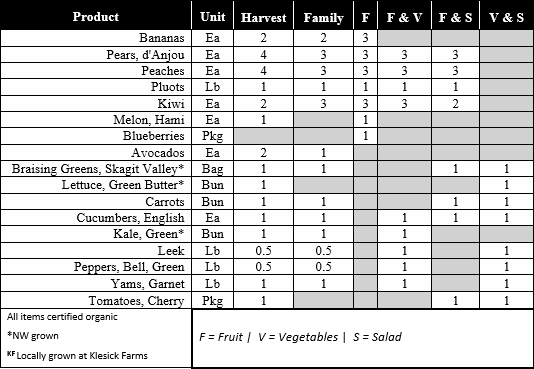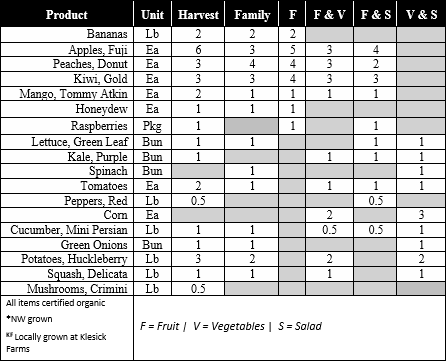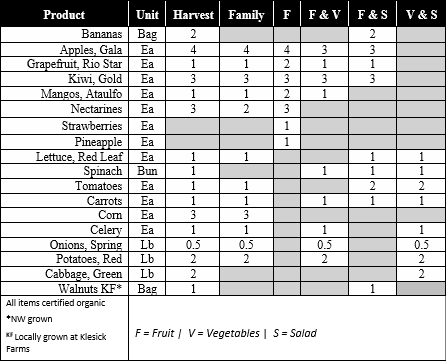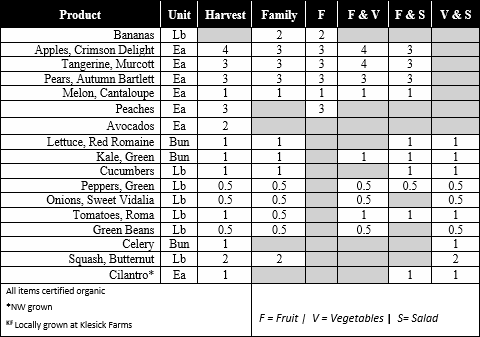This week we are featuring Klesick Farms Inchelium garlic. We have settled into this variety to grow. It is a classic soft-neck garlic as opposed to a hard-neck garlic. The latter produces a seed pod, called a garlic scape, that is edible. Ironically, those seed heads will eventually turn into bulbils, which is essentially a very tiny garlic clove. When you plant those bulbils, you get one clove the next year and then if you plant that one clove from that one bulbil you will get a head of garlic.
Most farmers do not plant bulbils, but instead plant cloves directly and bypass a year of growth. When we planted hard-neck garlic in the past, we would save those bulbils. Then in the fall, just like regular garlic, we would plant them and harvest garlic greens in the spring, similar to green onions. Through trial, error, and frustration, we discovered that harvesting garlic greens in March is really difficult due to the elements, and our clay soils.
We have learned to wait till the weather moderates and the soil warms before we attempt to harvest or plow on our farm. Because of this, we no longer grow garlic greens, mostly due to a time of year issue. However, garlic grown for bulbs does just fine, and the Inchelium is a beautiful heirloom variety that was discovered in Colville Washington.
Ironically, garlic, like most plants, takes on the personality of the soil and the farmer. This year’s garlic was a bumper crop! The combination of planting in hills, mulching with straw, and spacing it about 6” apart in each row and between the rows with two rows per hill seemed to work. Of course, that is what worked this year with this year’s weather pattern and this 9-month experiment will become the planting protocol going forward.
Garlic is one of those truly slow foods, especially compared to radishes, which take about 25 days to mature. Garlic is a superhero, and while it might take 9 months to grow and a few months to dry/cure, it can also last for months, unlike it’s quick growing compadre the Radish!
CAUTION. We are sending you “uncured” garlic in your box this week, which means we just harvested it and it will not last for more than a few weeks on your counter. EAT IT THIS WEEK. You can use it just like regular garlic, press it, dice it, stir fry or roast it, but just make sure you use it this week.
The rest of the garlic will be curing and available later in August and into the winter. If you haven’t noticed I am big fan of garlic and am all in on INCHELIUM!
Enjoy,
-Tristan
